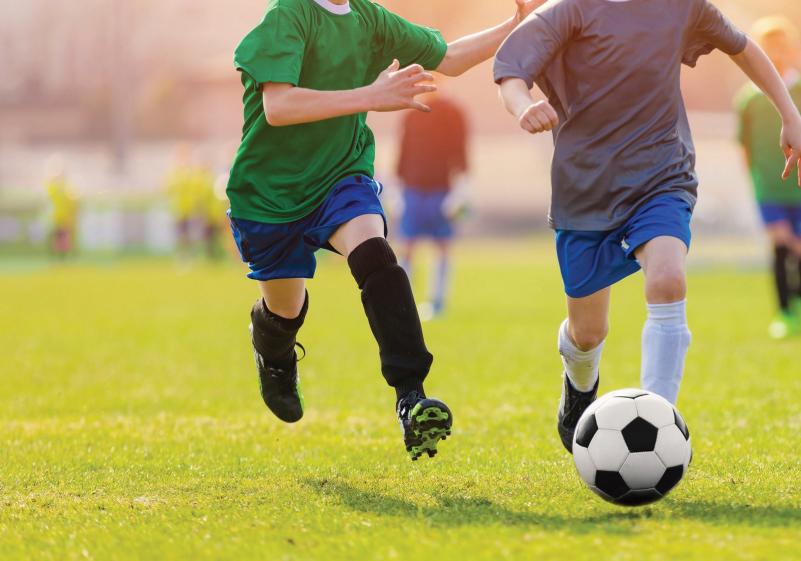
The Importance of Exercise and Sports in Youth and Young Adults
As sports are
ramping back up in select schools and universities in the state, it is
important to remember that participation in sports provides numerous
benefits, both physically and socially. While these benefits can come
with the downside of a sports-related injury, this should not keep our
youth on the bench. School-age youth and young adults need regular
physical activity, whether through organized sports or pursuit of a
personal interest, as exercise enhances and maintains musculoskeletal
and cardiovascular health. Organized sports during COVID-19 will
and should look different as every possible action to minimize the
virus’s spread is important.
There
are two types of sports-related injuries: acute injuries and overuse
injuries. Acute injuries are usually the result of a single traumatic
event, with common injuries including wrist fractures, ankle sprains,
hamstring strain and shoulder dislocations. Overuse injuries tend to be
more common in sports, but they usually occur over time and are subtle,
making them more difficult to diagnose and treat. Overuse injuries
result from repetitive micro-trauma to the tendons, bones and joints.
Examples include tennis elbow, youth pitching elbow, swimmer’s shoulder,
jumper’s knee, runner’s knee, Achilles tendinitis and shin splints.
Youth sports injuries are nearly impossible to avoid. They
can occur for several reasons, including improper training or technique,
equipment failure, and anatomic or biomechanical issues of the athlete.
Here are a few suggestions to keep your child in the game for life by
helping prevent injuries and avoid or reduce long-term complications:
•
Be in proper physical condition to play the sport. While children and
adolescents are often encouraged to participate in aerobic activities,
they can also benefit from strength training activities that help
enhance muscle and bone health.
• See a physician for a preseason physical examination.
•
Obtain instruction on training and technique, and make sure to follow
the rules of the sport. Coaches and trainers are there to teach proper
technique, which can help avoid injuries. Young athletes need to listen
to their instructions because most overuse injuries occur due to
improper technique. Learning how to use athletic equipment properly is
also important.
•
Wear appropriate protective gear and proper-fitting equipment. Make
sure your child’s equipment fits properly and is in good condition – a
weekly check can help minimize potential for injury. Just a few examples
of protective gear include shin guards for soccer, a hard-shell helmet
when facing a baseball or softball pitcher, a helmet and body padding
for ice hockey.
•
Always warm up before playing. Warm-up time should involve low-impact
exercise, such as running in place, that gradually brings the heart rate
up. Athletes should also stretch their muscles prior to activity, which
will help prevent injury. Stretching should go just beyond the point of
resistance and should not include bouncing. Hold stretches for 10-12
seconds.
•
Be sure your child cools down properly after activity. Cooling down
after play allows the heart rate to gradually return to a resting level.
Once again, stretching may be helpful to avoid injury.
• Do not play when in pain or very tired.
•
Maintain proper hydration with adequate water or other liquids
available during activity. Hydration allows muscles to work properly and
helps prevent cramps and spasms.
•
Be sure your child cools down properly after activity. Cooling down
after play allows the heart rate to gradually return to a resting level.
Once again, stretching may be helpful to avoid injury.
While
most youth will let you know when they are hurt, if you think your
child is prone to “tough it out,” here are a few signs of injury parents
and guardians should look out for:
• Avoiding putting weight on a certain body part or favoring one side of the body over the other (limping).
• Appearing to be in pain when using a particular body part.
• Inability to sleep.
• Shortness of breath or trouble breathing during activity.
• Headaches during or after activity.
• Appearing to experience stiffness in the joints or muscles.
• Lightheadedness or dizziness.
• Trouble sitting and/or climbing stairs.
• Inability to feel the fingers or toes.
• Experiencing unusual weakness.
• Irritated skin and/or blisters.
If
your child experiences any sharp or stabbing pain while participating
in a sport, they should immediately stop the activity. Playing through
pain may worsen the injury and will likely cut the season short. If you
have any concerns that your child might be injured, speak with a
physician or certified athletic trainer immediately. The sooner an
injury is diagnosed, the more effectively it can be treated, and the
sooner your athlete can return to the game.
Dr.
Shane Barton is the chairman of orthopaedic surgery at LSU Health
Shreveport, where he has been a member of the faculty since 2005,
teaching more than 1,100 medical students and directly supervising more
than 125 residents in orthopaedic surgery, family medicine and
rheumatology. Dr. Barton specializes in the treatment of pediatric and
adult sports-related injuries, as well as complex shoulder, elbow and
knee joint reconstruction procedures. Dr. Barton has served as a team
physician for several professional athletic teams, including the New
England Patriots and Boston Red Sox, as well as college and high school
teams.